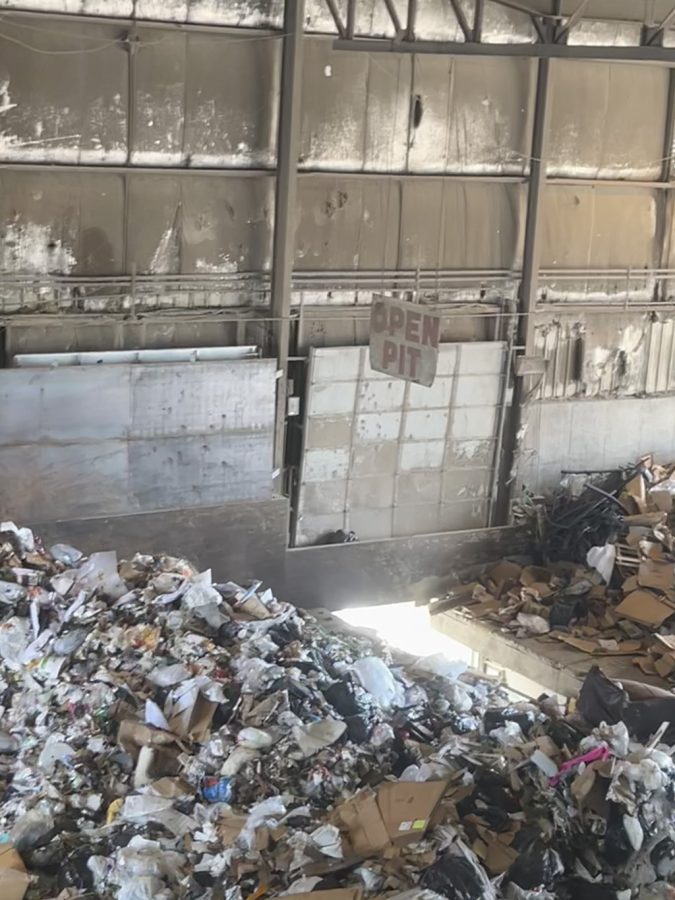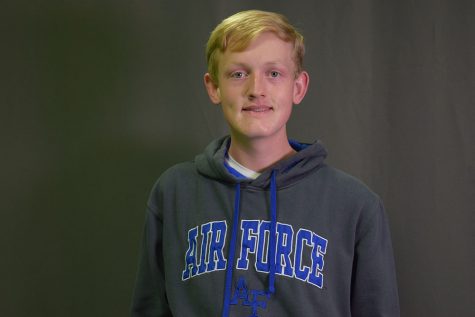Reduce, reuse…: What happens to the recyclable material that leaves NHS?
A load of waste at Republic’s transfer station in Indianapolis is shown. Trucks dump trash at the station for sorting and processing.
April 25, 2023
From wall decorations to lighting to classroom pets, no room at Noblesville is the twin of another. However, there is one thing that can be found in every corner of Noblesville’s classrooms: recycling bins, usually full of paper, empty water bottles, and more. But why? Where does this recyclable material you throw in the recycling bin actually go, and how does it eventually benefit you and the rest of the world?
STEP ONE: WASTE IS TAKEN TO A RECYCLING CENTER
Environmental Science teacher Eric Gurule recently took his AP classes on a field trip to discover where NHS’s discarded material ends up. “All of the trash [at Noblesville High School] goes to Republic’s transfer station in Indianapolis,” Gurule said. As soon as the waste arrives, recycling operations — which can be long, complicated, and costly — begin.
STEP TWO: WASTE IS DEPOSITED
Once the trash enters the facility, Republic Recycling Center’s staff work with complex equipment to sort the waste. Craig Lutz manages Republic’s plant in Indianapolis, and he witnesses the recycling process on a daily basis. “Trucks dump the commingled material on the floor and a loader takes the recyclable material to a drum feeder,” Lutz said. “The drum feeder then feeds the recyclable material up a conveyor in a uniform manner.”
STEP THREE: WASTE IS SORTED BY TYPE
Although plastic bottles, paper scraps, and aluminum cans initially get thrown into the same bin, not all recyclable material can be processed the same way. For this reason, Republic takes extra steps to make sure each type of waste is sorted and treated correctly. “The material passes through large rotating discs that separate out the cardboard,” Lutz said. “A second and sometimes third set of rotating discs [that] are smaller and closer together separate out the remaining paper and newspaper from the stream.” Plastic material is also recycled separately. “Conveyors send the material through optical sorters that look for plastic bottles, containers, and jugs to [place] into individual bunkers,” Lutz said.
STEP FOUR: BUSINESSES PURCHASE THE MATERIAL
While Republic plays a major role in the recycling of waste, the company does not produce the goods that are eventually created from recycled materials. Businesses around the world are able to buy the waste from Republic or other similar plants, and then create new products. However, this can only happen when no errors in the recycling process arise. “Workers and inspectors are stationed throughout the plant to ensure the right material is making it into the proper bunker,” Lutz said. If an item finds its way into the wrong bunker, contamination occurs. “Contamination [is] where unacceptable material is found within the recycling streams,” Lutz said. “[Contamination] has put the recycling industry in a difficult situation due to the overall costs [this brings] to the managers of these programs.”
STEP FIVE: WASTE IS SHIPPED TO COMPANIES
Once the sorting and purchasing process ends, the material is made into large cubes of compact material called bales. “These bales are shipped out to various mills and markets to be made into recyclable goods and products,” Lutz said. From there, companies can use these materials to create a variety of items, including some regularly seen on store shelves, such as shampoo, dog collars, and shoes.
At times, recycling may seem tedious, unnecessary, and ultimately confusing — but those who understand the process can truly make a difference. “When it comes to recycling, everyone has a part to play,” Lutz said. To protect ourselves and the lives of those who will follow us, Lutz said, consumers must embrace the habits that will shape our future — even if they seem as small as the recycling bins in the corners of classrooms. “When we all work together, we can make sure recyclable materials don’t end up in our lakes and landfills,” Lutz said.





